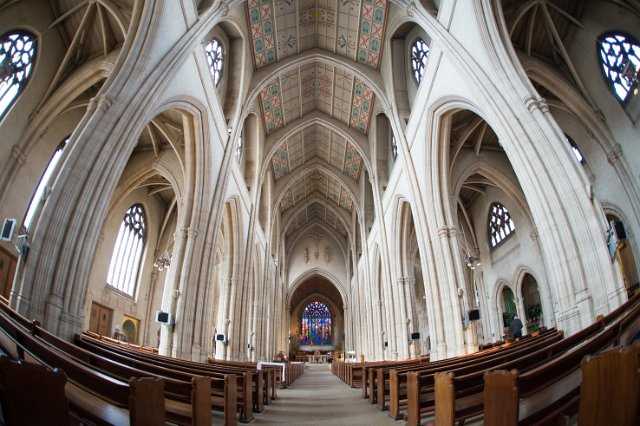Yamaha helps St George’s restore quality sound
- Details

Built in 1848, the cathedral’s architecture features high, vaulted ceilings, pillars, large leaded windows and expanses of smooth stonework, which all present challenges to effective sound reinforcement.
Cunnings Recording Associates were appointed to carry out a two-stage upgrade to the sound quality in the cathedral.
Daniel Cunnings of Cunnings Recording Associates says: “The cathedral had an ageing sound reinforcement system, but it had never been properly commissioned. No delays or EQ had been set up for any of the loudspeakers and there weren’t enough outputs available for the number of speakers.
“As well as services, the cathedral also hosts a range of other events, so there are microphone points throughout the building. The existing system was not easy to operate, so another intention behind the upgrade was to allow them to use their audio facilities to their fullest extent.”
For the first stage of the upgrade, the company replaced the existing audio processors and programmed the right amount of EQ and delay for each output to achieve an improved sound quality of spoken word. Daniel chose a Yamaha MRX7-D and two MTX3 matrix processors, with a DCP1V4S control panel located discreetly in the cathedral sacristy.
“We looked at all available options, but the Yamaha solution was the only one that could provide the range of inputs and outputs we needed. The cathedral wanted the system to be as simple as possible to operate, so the MRX7-D’s onboard Dugan automixing was also essential,” says Daniel.
There are 25 loudspeaker locations throughout the cathedral, including the day chapel and monitors for the choir and organist. The most-regularly used inputs are microphones on the main lectern, the day chapel lectern and above the choir, plus a handful of wireless units.
“The system is zoned and can address each loudspeaker individually, if required,” says Daniel.
“For now, the DCP1V4S provides a basic mute, enable and volume adjustment of each zone. One button is also programmed to recall the system back to its base state. Indeed, a reset button is the most important control for many of our clients.”
In the next stage of the project, new speakers and amplifiers will further improve the sound, while Yamaha’s multipurpose MCP1 control panel and the ProVisionaire Touch and Wireless DCP apps will be added, allowing comprehensive control of the system. This will also eliminate the need for an analogue mixing console, which had to be brought in for music events and recitals.
“The second stage will happen at the beginning of 2018 but, for now, Canon Richard is very happy that the whole congregation can hear services clearly,” says Daniel. “We have been pleased to help take St George’s into a new era and are looking forward to really making the most of the power of the Yamaha system in stage two of the project.”
(Jim Evans)
















